
The site is located in Redeemer Houses, a campus of affordable housing in East New York Brooklyn. The campus includes 5 buildings, a one-story grocery store, and parking spaces, all spread out over two city blocks. UQ was asked to evaluate the potential of the site to transform the underutilized portions into new affordable housing.
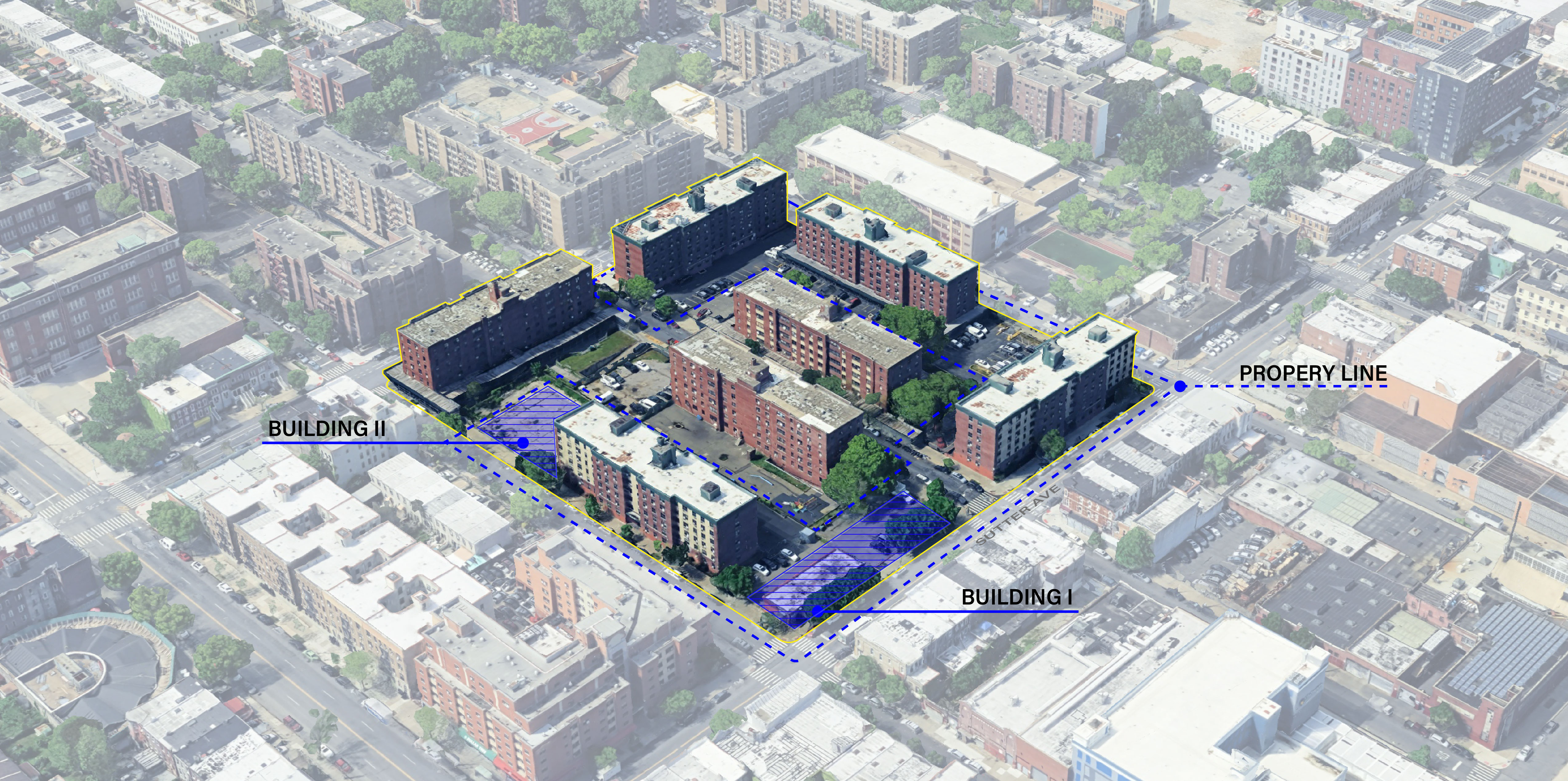
Remeeder Houses campus with the proposed portions for development
UQ performed a complex zoning study that involved historical research on the existing large-scale plan that combined both city blocks in their entirety and was approved in 1972. The analysis also looked at many iterations and scenarios to determine what could be built on the existing parcels. Eventually, the development team selected a strategy that required a special permit from City Planning for a large-scale general development and a rezoning. The selected approach unlocks the site’s potential to increase density, activate unused land for housing, improve the streetscape, and offer more amenities to the tenants and community. The firm submitted the project to City Planning and has begun the ULURP process for approval.
-02.jpg)
Zoning site plan
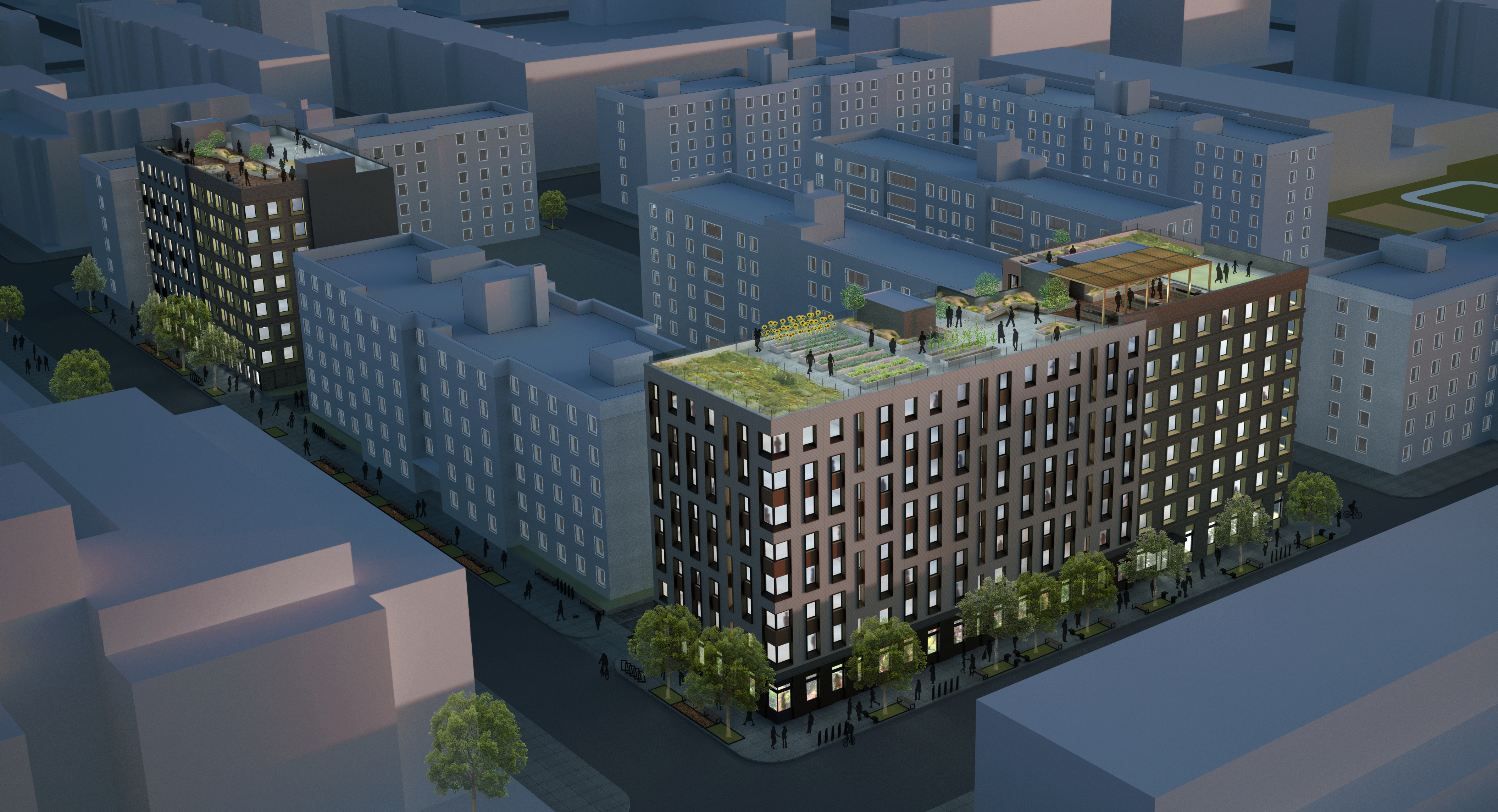
The overall site design relies heavily on the design of the building facades. Through a balance of contrast and continuity, the two facades shift between a light and dark brick. On the lighter side, the windows are accented with light brown panels that form a pattern of groupings varying in size. In contrast, the darker brick uses a uniform grid of windows, each offset with the same brown colored panels. Although the facade seems to belong to two separate structures, the use of a shared color scheme and materiality presents the building as a cohesive entity, elevating the context of the surrounding neighborhood.
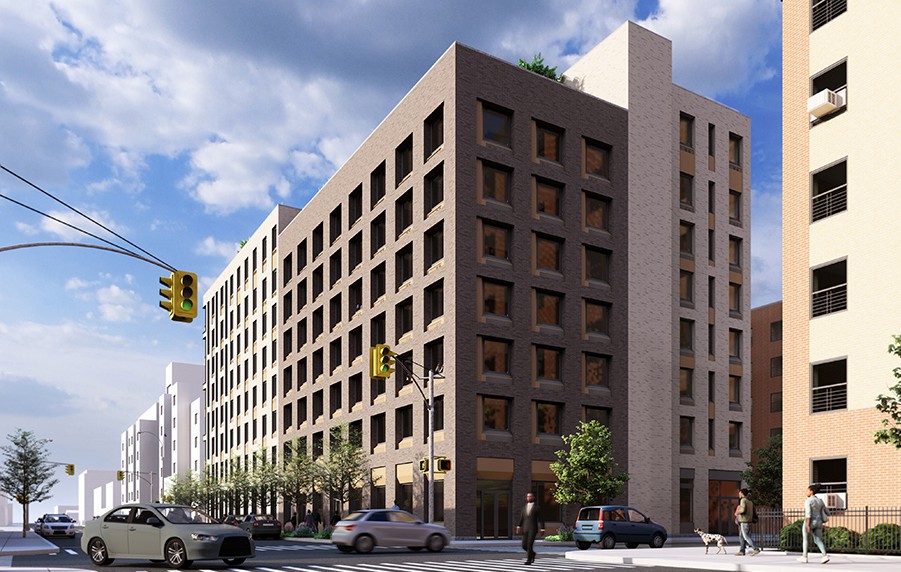
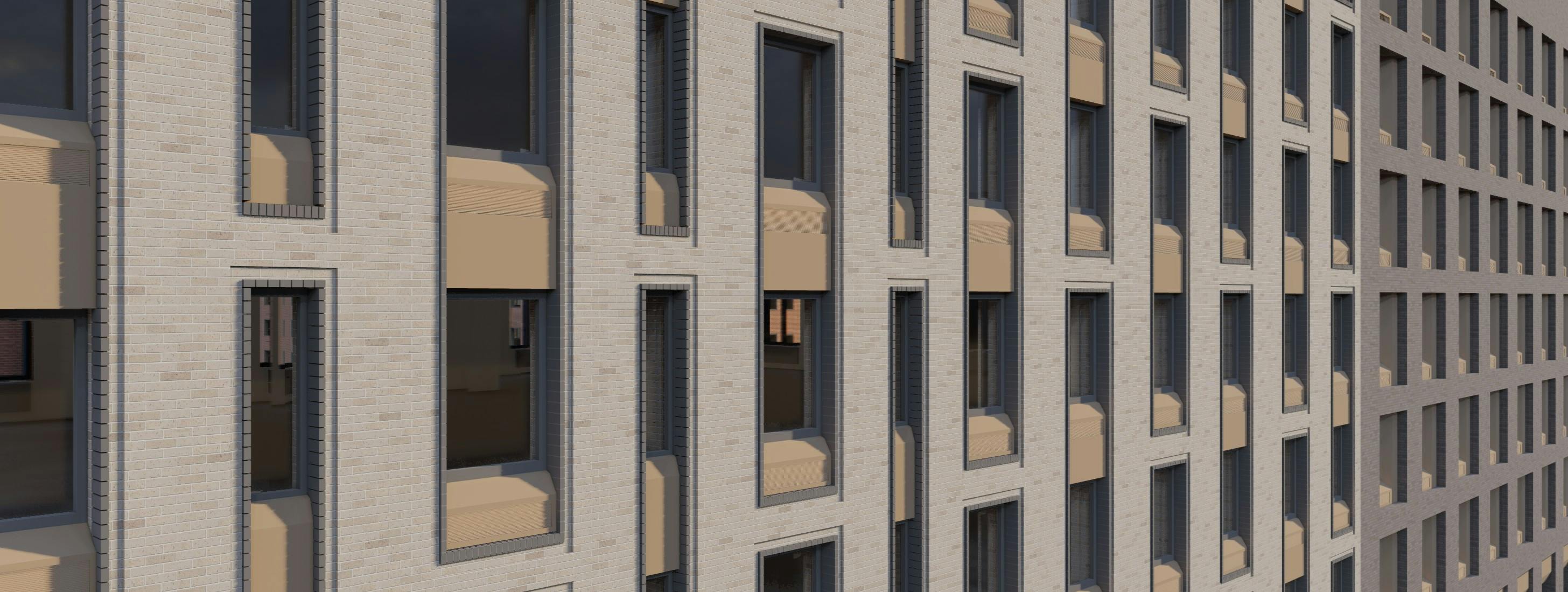
The facade is then reflected onto the site, softening the transition between street and building. The paving and design of outdoor areas were carefully chosen to mirror the shift in brick color as well as the alternating rhythms of the window patterns.
Similarly, the development of the roof spaces includes thoughtfully designed terrace that uses the same paving as the ground floor. Building I has access to a large terrace on the roof with amenities such as a community garden and seating areas. Alternatively, Building II is topped with extensive green roofs that contribute to stormwater management of the building and the biodiversity of the site.
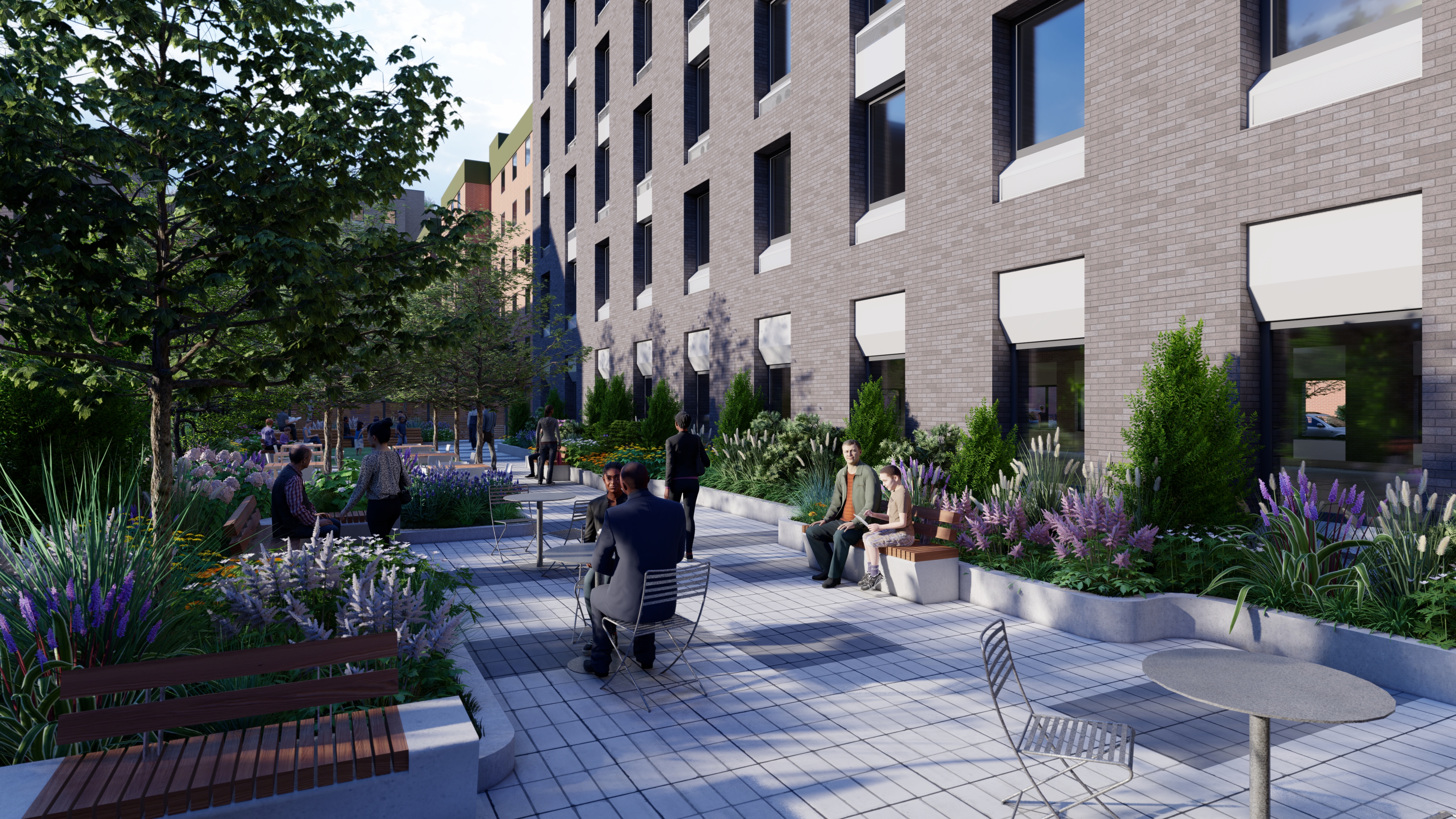
To accomplish this, UQ collaborated with Terrain, a renowned landscape architecture firm, to design a cohesive network of rooftops, patios, courtyards, and streetscapes. This network of communal spaces weaves through Sheffield Ave and behind an existing building on the site, connecting the two residential buildings and providing exterior playscapes and recreation spaces for tenants and members of the community.
